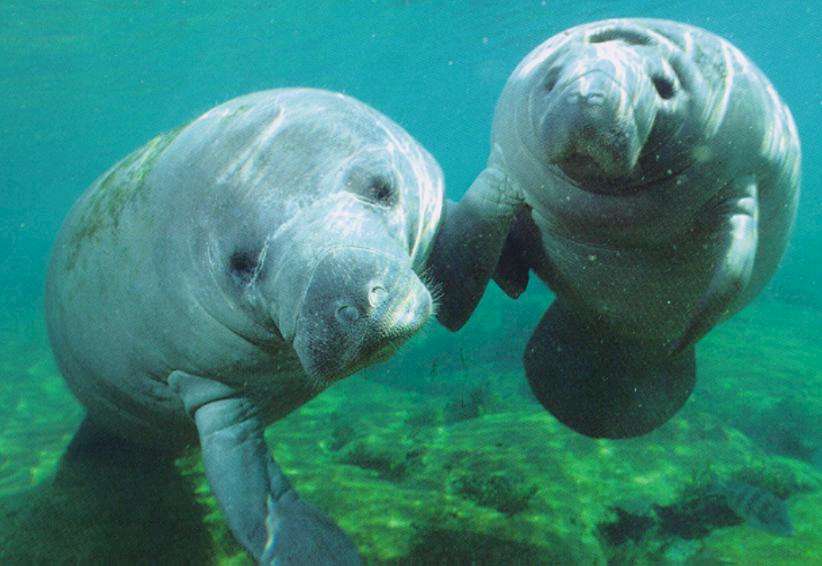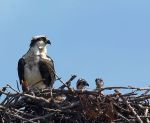- Manatees are marine mammals and breathe air through their nostrils.
- Manatees belong to an order of marine mammals called the Sirenians. Dugongs are the other member of this family. Stellar sea cows were also a member of this family, but they were hunted to extinction within 27 years of their discovery.
- Manatees can weigh up to 2,000 pounds.
- Manatees closest modern relative is the elephant. Evidence of this relationship is easy to spot – both animals have three to four fingernails.
- Manatees are typically pretty slow, but, can swim up to 20 mph.
- There are four species of manatees: the West Indian Manatee, the Florida Manatee (technically a subspecies of the West Indian species), the Amazonian Manatee and the West African Manatee.
- Manatees are credited for being the basis for the mermaid legend.
- Manatees are herbivores.
- Manatees can live up to 60 years old.
- Manatees have no natural predators, but, they are peril. Find out more about their plight at Save the Manatees.
Do you have a great question for us? E-mail info@beachchairscientist.com.














What people are saying …